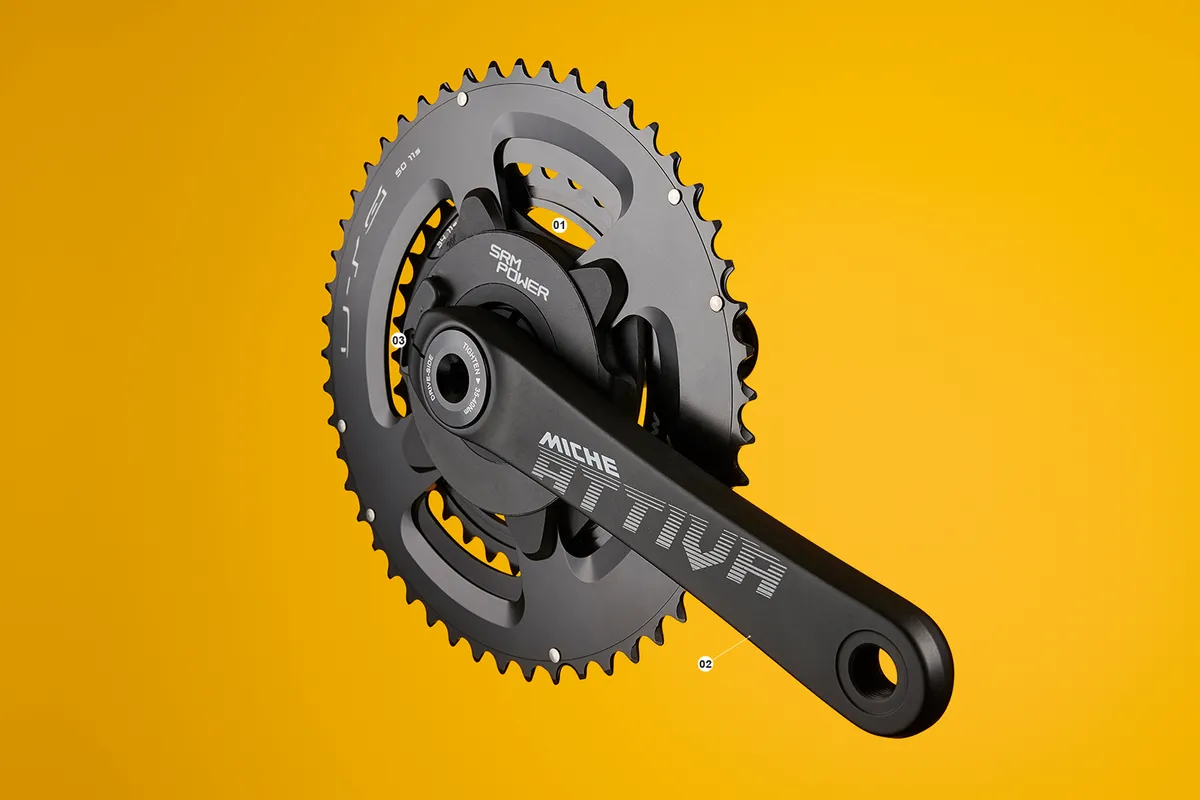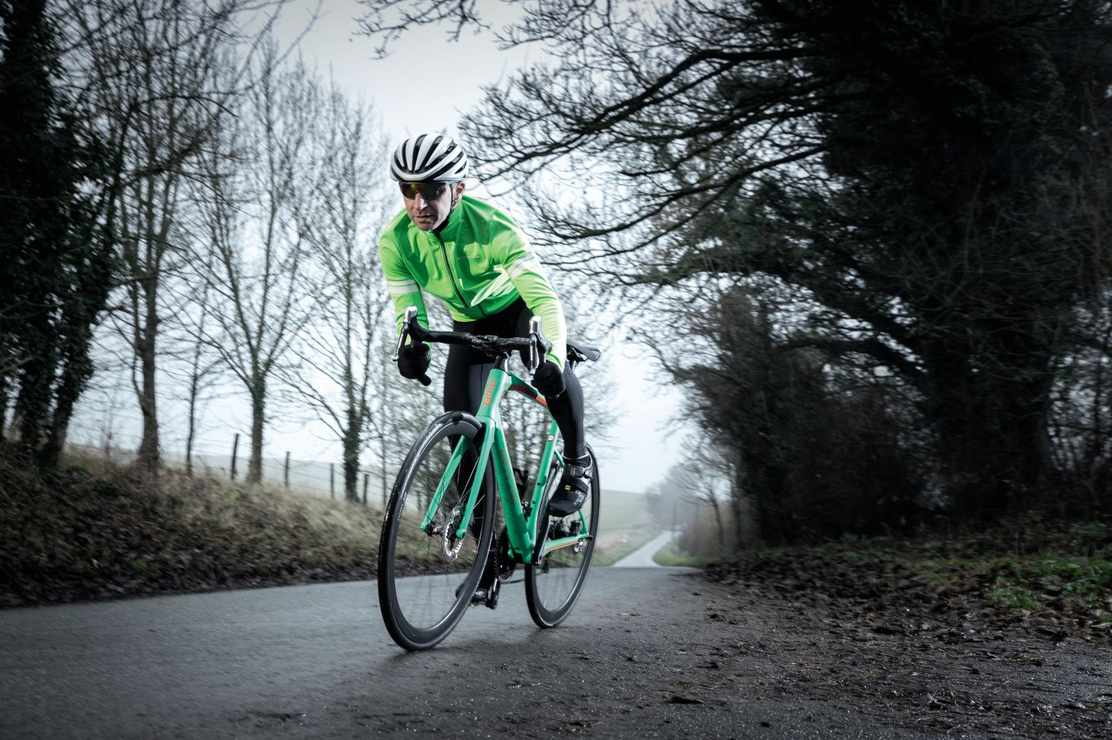German company SRM first patented its PowerMeter in 1987, recognising that basing training on power output is more objective than using heart rate, speed and perceived exertion, and isn’t directly affected by environmental factors.
It’s been refining its meters ever since, and it’s always been considered as the benchmark, but that has commanded a premium price.
The SRM spider-based PowerMeter is sealed from weather, dirt and sand and is resistant to cleaning chemicals and jet washes.
Inside, four measuring bridges connect the chainrings to the crank arms and measure torque. This measurement is multiplied by the angular velocity (pedal stroke speed) to produce a power figure in watts.
Italian component maker Miche has incorporated SRM’s PowerMeter into its Attiva chainset, to offer SRM accuracy at a more affordable price.
It has a rechargeable internal lithium battery, charged via USB through a magnetic port alongside the driveside crank. Each charge should last 100 hours and battery level can be displayed on a compatible GPS unit.
Offsetting the expensive SRM, Miche’s cranks are solid aluminium items, with material scooped away from the inside to reduce mass.
They feel stiff enough for general riding, but my 172.5mm 50/34 unit, including 24mm hardened steel axle and retaining bolt, weighed a hefty 935g. The complete unit is 270g more than a Dura-Ace Stages L-R power meter, with longer cranks and larger rings.

- Takes Miche 7075 T6 aluminium inner chainrings from 34-42, or outer ones from 42-53, with 9-, 10- or 11-speed drivetrains.
- The Guarnitura Attiva SRM crankset comes in crank lengths of 160, 165, 170, 172.5 and 175mm, and has a Q-Factor of 142.5mm.
- The power meter is recharged by a USB cable that snaps into the port beside the crank with red/green LED status indicators.
Fitting is slightly complicated by the use of an aluminium insert that sits between the axle and left-side crank. It makes the crank a snug fit, needing some hammering to seat or remove should the spacing need adjusting.
The SRM needs the supplied external cadence sensor to be fitted beneath the bottom-bracket shell in order to work. It’s designed to bolt behind a cable guide and, if you don’t have one, an adhesive pad is supplied.
After a zero offset, I pedalled a specific gear at 100rpm on a fluid trainer for five minutes, three times, noting 10- and 30-second power averages, and then repeated on the same bike with a 4iiii meter fitted.
The results were consistent across both and within 2 per cent variation. SRM claims +/-1 per cent accuracy; following further road tests I have no reason to doubt it.
One SRM quirk is it only transmits data over ANT+, but during testing, it connected well with my aging Garmin with no dropout.
Miche’s cheaper SRM is actually challenged by SRM’s aluminium Origin Road power meter (€1,399 or €1,999 for the Look carbon crank version).
The Attiva does provide possibly the most accurate power data for a budget, but there are many accurate meters that weigh less.
Product
| Brand | Miche |
| Price | £1250.00 |
| Weight | 935g |
Features
| Power meter type | crank_based |
| Connectivity | antPlus |
| Battery | Rechargeable internal lithium battery |
| Battery life | 100hrs per charge |
| Features | Crank lengths: 160, 165, 170, 172.5 and 175mm Q-Factor: 142.5mm |
